Potřebujeme váš souhlas k využití jednotlivých dat, aby se vám mimo jiné mohly ukazovat informace týkající se vašich zájmů. Souhlas udělíte kliknutím na tlačítko „OK“.
ASTM F2786-10
Standard Practice for Field Leak Testing of Polyethylene (PE) Pressure Piping Systems Using Gaseous Media Under Pressure (Pneumatic Leak Testing)
Automaticky přeložený název:
Standardní praxe Terénní Testování těsnosti z polyetylénu (PE) Systems tlakovým potrubím na plynná média pod tlakem (pneumatická těsnosti)
NORMA vydána dne 1.2.2010
Informace o normě:
Označení normy: ASTM F2786-10
Poznámka: NEPLATNÁ
Datum vydání normy: 1.2.2010
Kód zboží: NS-54533
Počet stran: 8
Přibližná hmotnost: 24 g (0.05 liber)
Země: Americká technická norma
Kategorie: Technické normy ASTM
Kategorie - podobné normy:
Anotace textu normy ASTM F2786-10 :
Keywords:
air test, compressed air test, pressure, field leak test,, leak test, polyethylene pipe, pneumatic leak test, ICS Number Code 23.040.20 (Plastic pipes)
Doplňující informace
| Significance and Use | ||||||||
|
If required by the authority having jurisdiction, pressurized gaseous media leak testing may be conducted after installation to discover and correct leaks or faults in a newly constructed or modified polyethylene pressure piping system before placing the system in service. Leakage or faults usually occur at connections, joints, and mechanical seals where sealing under pressure is required. Safety is of paramount importance when conducting pressurized gaseous media leak tests because testing results include no leaks, leaks, sudden violent rupture, or catastrophic failure. Systems that contain lower pressure rated or non-pressure rated components that cannot be isolated or removed from exposure to test pressure, or where temporary caps or closures are not practical, are not suitable for testing in accordance with this practice. Leakage Allowance—Leakage is not allowed for joints including butt, socket and saddle fusion, electrofusion, and restrained gas-tight mechanical joints. See 7.6. Other types of joints, connections, or components having seals in the system may have a leakage allowance. Contact the joint, connection or component manufacturer for information. Poisson-Effect Expansion and Contraction—When test pressure is applied to plastic piping systems that have fully restrained joints such as heat fusion, electrofusion, bolted flanges, etc., reduction of overall length or an increase in longitudinal stress results from diametrical expansion of the pipe. Disjoining (pull-out) of partially restrained or non-restrained connections or joints such as bell-and-spigot joints having insufficient resistance to pull-out stress or length reduction is possible when such joints are in-line with the test section. To prevent Poisson-effect disjoining, take measures such as installing external joint restraints (diametrical clamps and tie-rods) across in-line partially restrained or non-restrained joints, installing in-line thrust anchors at the ends of fully restrained piping sections, or isolating a fully restrained test section from piping with nonrestrained or partially restrained joints. Note 3—A tensile stress is applied to a material will cause elongation in the direction of the applied stress, and will cause a decrease in dimension at right angles to the direction of the applied stress. The ratio of decrease to elongation is the Poisson ratio. Under test pressure, piping materials will expand slightly in diameter and contract in length slightly according to the Poisson ratio of the material. |
||||||||
| 1. Scope | ||||||||
|
1.1 This practice provides information on apparatus, safety, pre-test preparation and procedures for conducting field tests of polyethylene pressure piping systems after installation using gaseous media such as unodorized inert non-toxic gas or air, and applying pressure to determine if leaks exist in the system (pneumatic leak testing). This practice applies only to testing to discover leakage. Testing for other purposes such as testing to establish operating pressure is beyond the scope of this practice. 1.2 This practice does not address leak testing using pressurized liquids (hydrostatic testing). For field leak testing using pressurized liquids, see Practice F2164. 1.3 Leak testing with pressurized gaseous media shall be used only if one of the following conditions exists: 1.3.1 The piping system is so designed that it cannot be filled with a liquid, or 1.3.2 The piping system service cannot tolerate traces of liquid testing media. 1.4 Where hydrostatic testing is specified in contract documents or by the authority having jurisdiction, pressurized gaseous media (pneumatic) testing shall not be substituted without the express consent and authorization of the authority having jurisdiction. 1.5 Some manufacturers prohibit or restrict pressurized gaseous media testing of their products. Contact component manufacturers for information about testing with gaseous media under pressure. Where the manufacturer of a test section component prohibits or restricts pressurized gaseous media testing, pressurized gaseous media (pneumatic) testing shall not be used without the express consent and authorization of the authority having jurisdiction and the component manufacturer. Note 1—Components that are not suitable for testing with gaseous media may not be suitable for service with pressurized gaseous media. 1.6 This practice does not apply to leak testing of non-pressure, negative pressure (vacuum), or non-PE piping systems. For field acceptance testing of plastic gravity flow sewer lines, see Test Method F1417. 1.7 This practice does not apply to fuel gas piping systems that extend from the point of delivery to the appliance connections. For other than undiluted liquefied petroleum gas (LP-Gas) systems, the point of delivery shall be considered to be the outlet of the service meter assembly or the outlet of the service regulator or service shutoff valve where no meter is provided. For undiluted LP-Gas, the point of delivery shall be considered to be the outlet of the final pressure regulator, exclusive of line gas regulators, in the system. Testing for these systems can be found in NFPA 54 / ANSI Z223.1. This practice does not apply to LP-Gas systems covered under NFPA 58. 1.8 This practice is intended for use with polyethylene pressure piping that conveys gaseous media under pressure (compressed gas) if the owner or operator or installer of the line does not have an established leak testing procedure that is acceptable to the authority having jurisdiction. 1.9 The values stated in inch-pound units are to be regarded as standard. The values given in parentheses are mathematical conversions to SI units that are provided for information only and are not considered standard. Numbered notes and information in parentheses in the text of the practice are non-mandatory information. Table notes are mandatory information. 1.10 Warning—Failure during a pressure leak test can be extremely violent and dangerous especially where a compressed gaseous media is used. In a compressed gaseous media test, energy is applied to compress the gaseous media in addition to pressurizing the system. If failure occurs, both energies can be suddenly released and can be extremely violent compared to failure during leak testing with an incompressible liquid testing media. Note 2—To illustrate the violent hazard of failure, assume a 5 Hp compressor is used to raise the test section to test pressure and that it takes 1 h to achieve test pressure. If sudden rupture occurs, energy release may occur in 2 s. Therefore, the horsepower of the energy release would be 5 HP × 1 h × 3600 sec/h / 2 s = 9,000 Hp. Further, if diameter is doubled, energy release is four times greater. For an example test section that is twice the diameter, energy release would be 36,000 Hp. 1.11 This standard does not purport to address all of the safety concerns, if any, associated with its use. It is the responsibility of the user of this standard to establish appropriate safety and health practices and determine the applicability of regulatory limitations prior to use. Additional safety information is presented in Section 7 and throughout this practice. |
||||||||
| 2. Referenced Documents | ||||||||
|
Podobné normy:
Historická
1.2.2013
Historická
1.4.2010
Historická
1.12.2009
Historická
1.11.2013
Historická
1.11.2011
Historická
1.8.2012
Doporučujeme:
Aktualizace technických norem
Chcete mít jistotu, že používáte pouze platné technické normy?
Nabízíme Vám řešení, které Vám zajistí měsíční přehled o aktuálnosti norem, které používáte.
Chcete vědět více informací? Podívejte se na tuto stránku.



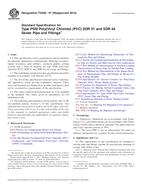 ASTM F2658-07(2013)..
ASTM F2658-07(2013)..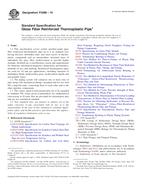 ASTM F2686-10
ASTM F2686-10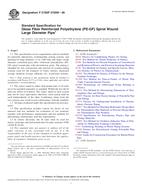 ASTM F2720/F2720M-09..
ASTM F2720/F2720M-09..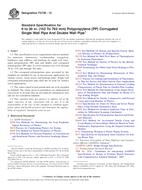 ASTM F2736-13
ASTM F2736-13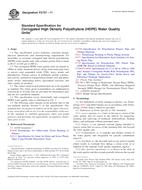 ASTM F2737-11
ASTM F2737-11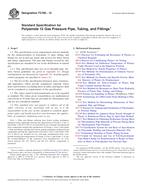 ASTM F2785-12
ASTM F2785-12
 Cookies
Cookies
